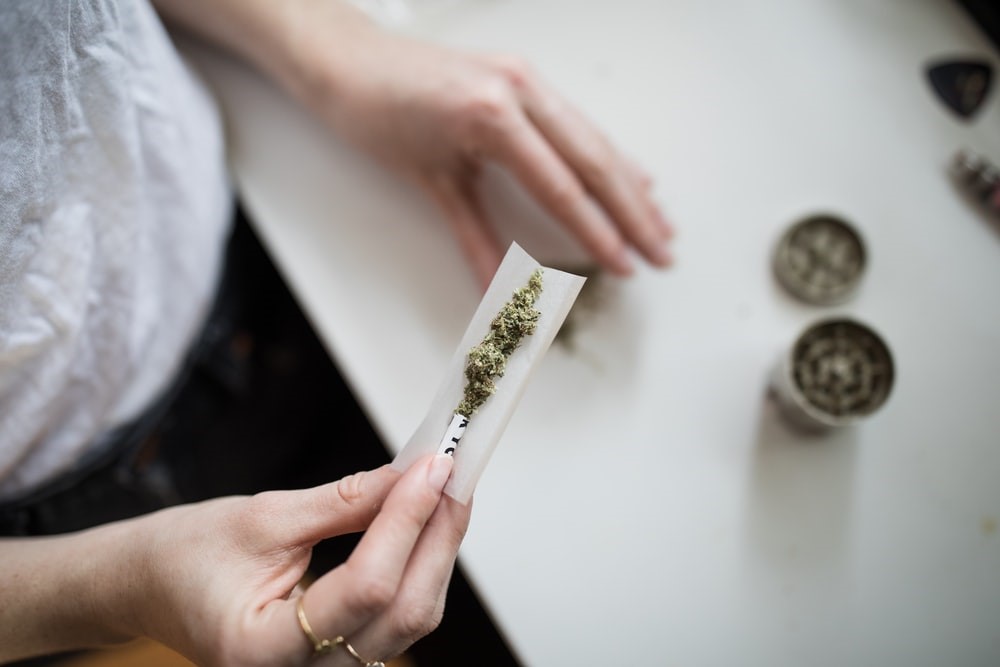
Decarboxylation may sound complicated, but you’ve probably experienced it before. In simple terms, it means heating the cannabis and this is the only way to ensure that you get the most out of your food.
The phytochemicals in raw cannabis are very different to those found in the smoke after lighting your buds. Would you believe us if you ate a whole bag of raw cannabis, you wouldn’t get high? The truth is that raw cannabis does not contain any psychoactive molecules, or rather, it contains extremely small amounts. Instead, fresh, sticky buds are rich in precursors known as cannabinoid acids. This requires a heat-triggered chemical reaction known as decarboxylation. This makes it possible to produce the non-psychotropic cannabinoid acids, the cannabinoids we love so much.
Decarboxylation: what is it?
The word decarboxylation sounds very complex and like a long-forgotten term from chemistry classes, but it actually describes a very simple chemical process that makes the cannabis experience possible.
For many smokers and growers, the love of cannabis often rekindles the love of science. Take advantage of your interest in cannabis and get ready to learn what happens to your home-grown cannabis when you put a flame to it.
At what temperature does decarboxylation take place?
In principle, the decarboxylation of THCA and CBDA takes place at the same temperature. If they are exposed to a constant temperature of 110°C for 30-45 minutes, both chemicals are eventually converted into CBD and THC, respectively. However, this temperature is low enough that the aromatic terpenes and other desirable phytochemicals are retained.
Advantages of decarboxylation
Decarboxylation has many advantages. Although THCA is also converted to THC when you smoke it, there are also benefits to decarboxylating your cannabis before smoking it.
Why should CBD strains be decarboxylated?
Just as you need to decarboxylate a THC-rich herb to experience its effects, you will also benefit from doing so with a CBD-rich bud. During decarboxylation, CBDA becomes CBD. Although CBDA also has interesting effects, CBD offers much better understood benefits. So, before making edibles, tinctures or oil from your CBD flowers, you need to decarboxylate them to get the best possible results.
At what temperature do THC and CBD decarboxylate?
The decarboxylation temperature is roughly the same for most major cannabinoids. As mentioned earlier, maintaining a temperature of 110°C for 30-45 minutes will give a good result.
How to decarboxylate cannabis
For smokers and vaporizer users, decarboxylation occurs naturally during the process of combustion or vaporization. Although not as precise as the methods below, lighting your herb with a flame instantly decarboxylates the cannabinoids and terpenes, allowing you to inhale quickly and enjoy the effects. However, the excessive heat generated by this method is known to “kill” some of these volatile molecules. Vaping is a little more controlled as the devices are heated to activate THC and other cannabinoids and terpenes to near their boiling point, allowing you to get a nearly full dose of each compound.
- Oven method
The most common method of decarboxylating cannabis is to “bake” it in an oven, especially when preparing edibles. A few steps are required for this method:
- Grind your cannabis until it is uniform enough to be easily spread on a fine surface.
- Line a baking sheet with a piece of parchment paper.
- Pour your crushed cannabis onto the baking paper, making sure it is evenly distributed.
- Preheat your oven to 115°C and slide the baking paper in for about 45 minutes. After about half the time, stir the cannabis.
- Microwave method
If you don’t have 45 minutes to cook your weed in the oven, this method is perfect. Although this method is a bit more interactive, you can decarboxylate your cannabis in a few minutes using your trusty microwave. Here we go:
- As with the previous methods, grind your herb to a medium consistency. Transfer it to a microwave-safe bowl or tray.
- Set the microwave to HIGH for about 90 seconds.
- Take your herb out and smell it. It should smell pungent, but not burnt. If it is not ready, stir it a bit and put it back in the microwave for 60-90 seconds.
- The vacuum bag method
After the oven method, this is probably our second favorite method for decarboxylating cannabis. Since water boils at 100 ℃, it’s literally impossible to burn your weed using this method. As you will be using a thermometer, you will also have very precise control over the temperature. This will ensure that all the cannabinoids in your buds are activated.
How to decarboxylate vacuum-packed cannabis:
- Grind your buds to a medium consistency, put them in a vacuum bag and seal it with a vacuum sealer.
- If you have a vacuum cooker, set it to 95 ℃. Put the bag in the oven and cook your flowers for about 1 hour. If you don’t have a sous vide cooker, fill a pot with water and bring it to a boil over high heat.
- As soon as it starts to boil, reduce the heat and use a thermometer to keep the water temperature between 95 and 100 ℃.
- Place your vacuum bag of the herb in the water and cook for about 60 minutes.
- Natural method
It’s important to note that if left to its own devices, cannabis will naturally decarboxylate over time. The elements’ action is sufficient to slowly convert THCA to THC and THC back to the cannabinoid CBN. However, this process is incredibly tedious, and heat will almost certainly be required to keep it moving. Whichever method is chosen, decarboxylation is essential to “unleash” the psychotropic power of our illustrious THC.



Leave a Reply